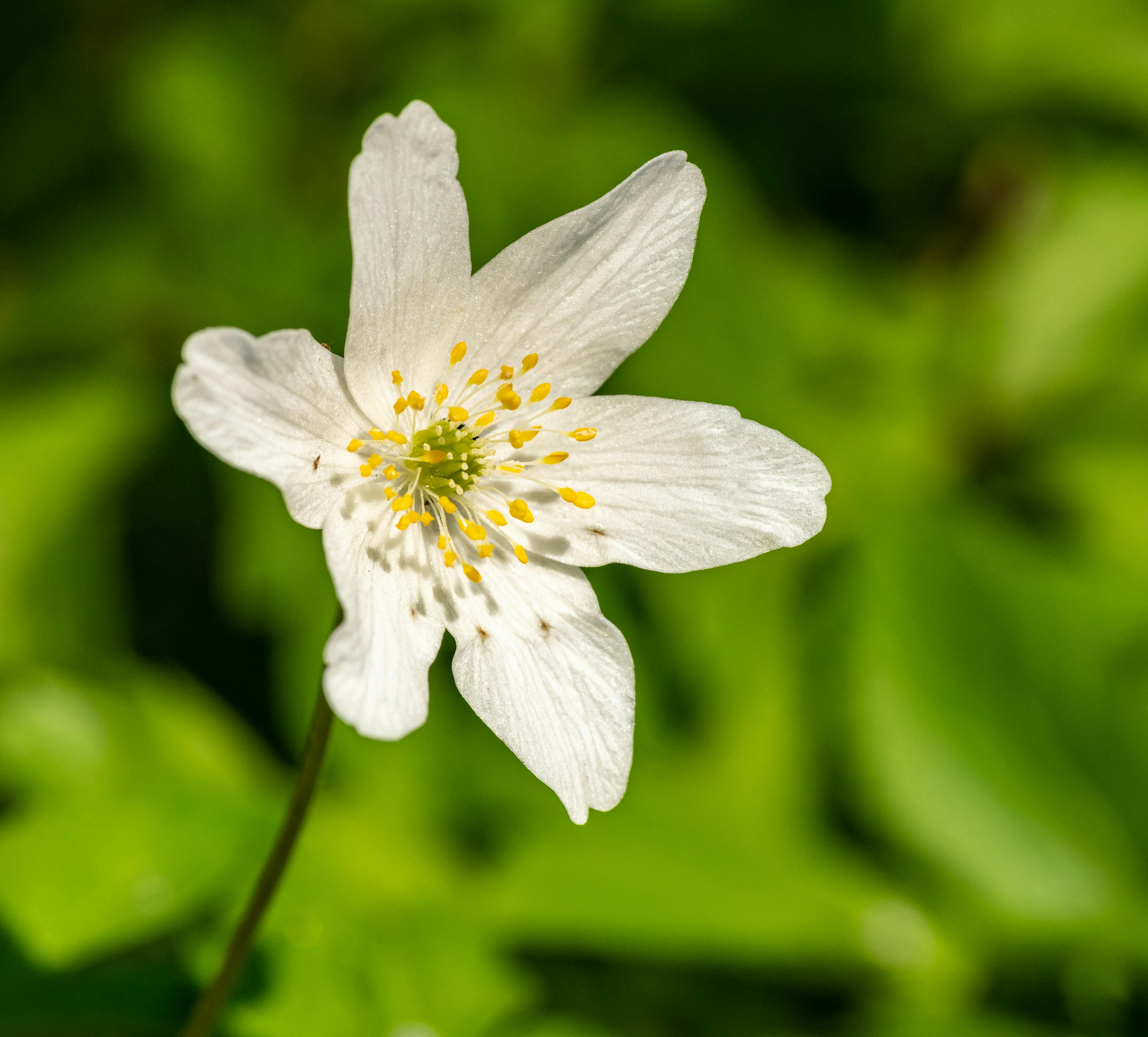If you have a strawberry plant that is not flowering, it can be frustrating. Knowing the reasons why your strawberry plant is not flowering is the first step towards finding a solution. There are several potential causes for a lack of flowers, including environmental conditions, nutrient deficiency, or even improper pruning. Understanding these factors can help you get your strawberry plant to flower again and enjoy the delicious fruit it produces.A lack of flowering in strawberry plants can be caused by a variety of factors, including too much nitrogen in the soil, too little light, over-watering, improper pruning techniques, and overly compacted soil. Additionally, the age of the plant can also play a role in the amount of flowering that occurs. If a strawberry plant is very young or if it has been growing in one pot for several years, it may not produce many flowers. Finally, temperature fluctuations can also impact flower production; if temperatures are too low or too high for extended periods of time, this can reduce flowering.
Temperature and Light Requirements
Strawberry plants require average to warm temperatures of around 60-70°F (15-21°C) for optimal flower production. In addition, they need full sun or bright light for at least six hours a day to ensure adequate flowering. If the temperature drops below 50°F (10°C), the strawberry plant may suffer from poor flower production and decreased yields.
Soil Requirements
Strawberry plants prefer a soil that is rich in organic matter and well-drained with a pH between 5.5 and 6.5. The soil should also be loose enough for good root growth, as this will help the plant produce more flowers. It is also important to keep the soil evenly moist but not soggy, as too much water can cause root rot.
Fertilizer Requirements
Fertilizer is an important part of encouraging flower production in strawberry plants. A balanced fertilizer should be applied every four to six weeks throughout the growing season, starting when the plant begins to flower and continuing until the end of the season when harvesting is complete. Additional nitrogen may be needed during periods of heavy fruiting to promote healthy growth and flowering.
Pruning Requirements
Pruning is an important step in promoting healthy flower production in strawberry plants. The best time to prune is after fruiting has finished and before new growth begins in spring. Pruning should involve removing dead or weak branches, as well as any shoots that are growing outside of the desired area. This will help ensure that more energy goes into producing healthy flowers rather than unproductive foliage.
Encouraging Flowering of Strawberry Plant
Strawberry plants are a great addition to any garden, and with the right care, they will reward you with beautiful flowers and plenty of delicious berries. To encourage your strawberry plant to flower, there are a few steps you can take. First, make sure your plant has enough light. Strawberries need at least 8 hours of direct sunlight per day in order to bloom. If you don’t have access to natural sunlight, then consider investing in grow lights for your plant.
Next, make sure your strawberry plant is getting enough nutrients. Fertilize your plant periodically throughout the growing season with a balanced fertilizer. If you’re unsure what type of fertilizer to use for your specific plant, consult an expert at your local garden center for advice.
Finally, keep the soil around your strawberry plant moist but not soggy. Too much water can lead to root rot and other diseases that can prevent flowering. You should also remove any old or dead foliage from around the base of the plant as this can prevent it from receiving enough light and air circulation, both of which are needed for blooming.
By following these simple steps, you can help encourage your strawberry plant to flower so that you can enjoy its beautiful blooms and delicious fruits all season long!
Potential Nutrient Deficiencies for Strawberry Plants
Strawberry plants can suffer from a variety of nutrient deficiencies that can affect the health of the plant and the quality of the fruit. The most common nutrient deficiencies for strawberry plants are calcium, magnesium, nitrogen, potassium, sulfur, and iron. A lack of one or more of these nutrients can lead to reduced growth and yields, as well as poor quality fruit.
Calcium is essential for cell wall development in strawberries and a lack of it can cause stunted growth or death of young leaves. Magnesium aids in photosynthesis and helps keep leaves from yellowing. Nitrogen is important for dark green foliage, while potassium helps with root development and disease resistance. Sulfur is necessary for protein production and iron helps with chlorophyll production.
If your strawberry plants are not receiving sufficient nutrients from soil alone, you may need to supplement with fertilizers or other nutrient sources. Soil testing can help you determine which nutrients are needed in what amounts to ensure healthy plant growth. In addition to soil testing, monitoring your plants’ overall health will be key in determining if they are receiving enough nutrition or if they need additional supplementation.
Overwatering or Underwatering Affecting My Strawberry Plant’s Ability to Flower?
Strawberry plants need the right amount of water to grow and produce flowers. Too much or too little water can prevent the plant from flowering. Overwatering can lead to root rot, which can prevent the plant from getting enough nutrients and water. On the other hand, underwatering can cause wilting and slow growth, leading to poor flowering. Both overwatering and underwatering can result in fewer flowers, so it is important to understand how much water your strawberry plant needs.
The amount of water needed by a strawberry plant depends on several factors, such as soil type, light exposure, temperature, and humidity levels. Generally speaking, it is best to give the plant a deep watering about once a week or when the top inch of soil is dry. If you are in an area with higher temperatures or lower humidity levels, you may need to water more often. However, be sure not to overdo it as this can lead to root rot and other problems.
It is also important to make sure that your strawberry plants are not in standing water for too long as this can also lead to root rot. If you are uncertain about how much water your plants need, consult a local gardening expert for advice on watering schedules for your particular climate and soil type. Proper watering is essential for strawberry plants to grow properly and produce flowers.
Underwatering
Signs of underwatering in a strawberry plant include yellowing or wilting leaves, dry soil, and small fruits. When a plant is underwatered, the leaves will first appear wilted due to lack of water in the foliage. This can be caused by too little water or irregular intervals between watering. The soil around the strawberry plant will appear dry and cracked if it has not been watered enough. Additionally, the fruits may also be smaller than normal and lack color due to lack of water.
Overwatering
Signs of overwatering in a strawberry plant include yellow or brown leaves, rotting fruit, and soggy soil. When a plant is overwatered, the leaves will begin to turn yellow or brown as they become soggy with too much water. This can happen if too much water is given at once or if the soil does not have proper drainage. The fruit may also rot as it becomes over saturated and unable to dry properly. Additionally, the soil around the strawberry plant will be soggy when overwatered as it doesn’t have a chance to dry out between watering sessions.

Conclusion
The reasons why a strawberry plant may not be flowering include various environmental factors such as temperature, light, and water availability. Inadequate nutrition can also prevent flowering. The health of the plant should also be considered, as stress or disease can prevent flowering. If these potential causes are addressed and the plant continues to struggle to produce flowers, it is important to seek advice from local experts or agricultural extension services.
In conclusion, there are many potential reasons why a strawberry plant may not be flowering. Understanding the needs of the plant is important in order to identify what could be causing the issue and provide solutions for a successful harvest. With proper care and understanding of the environmental needs of strawberry plants, gardeners should have success with their strawberry harvest.



